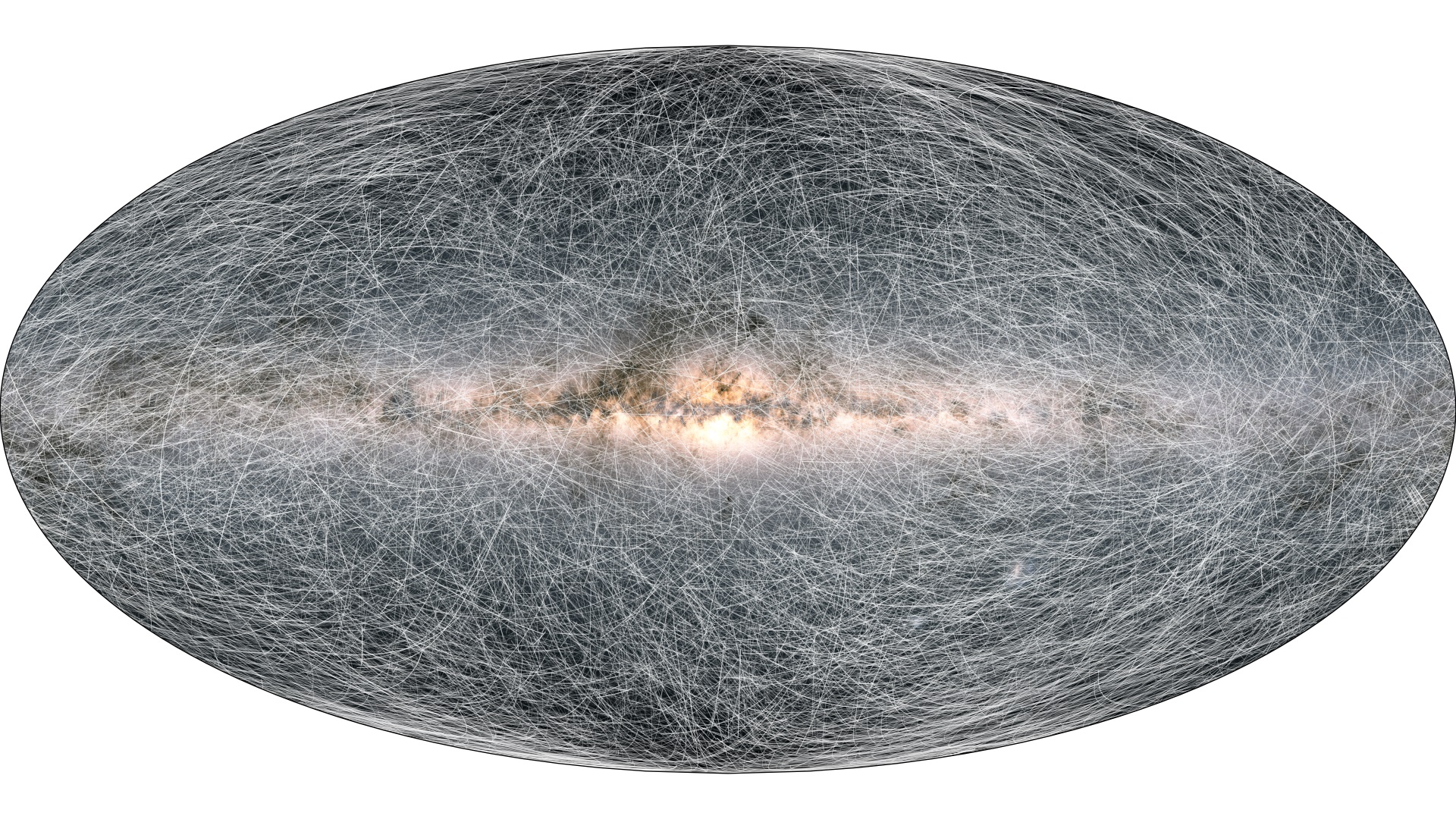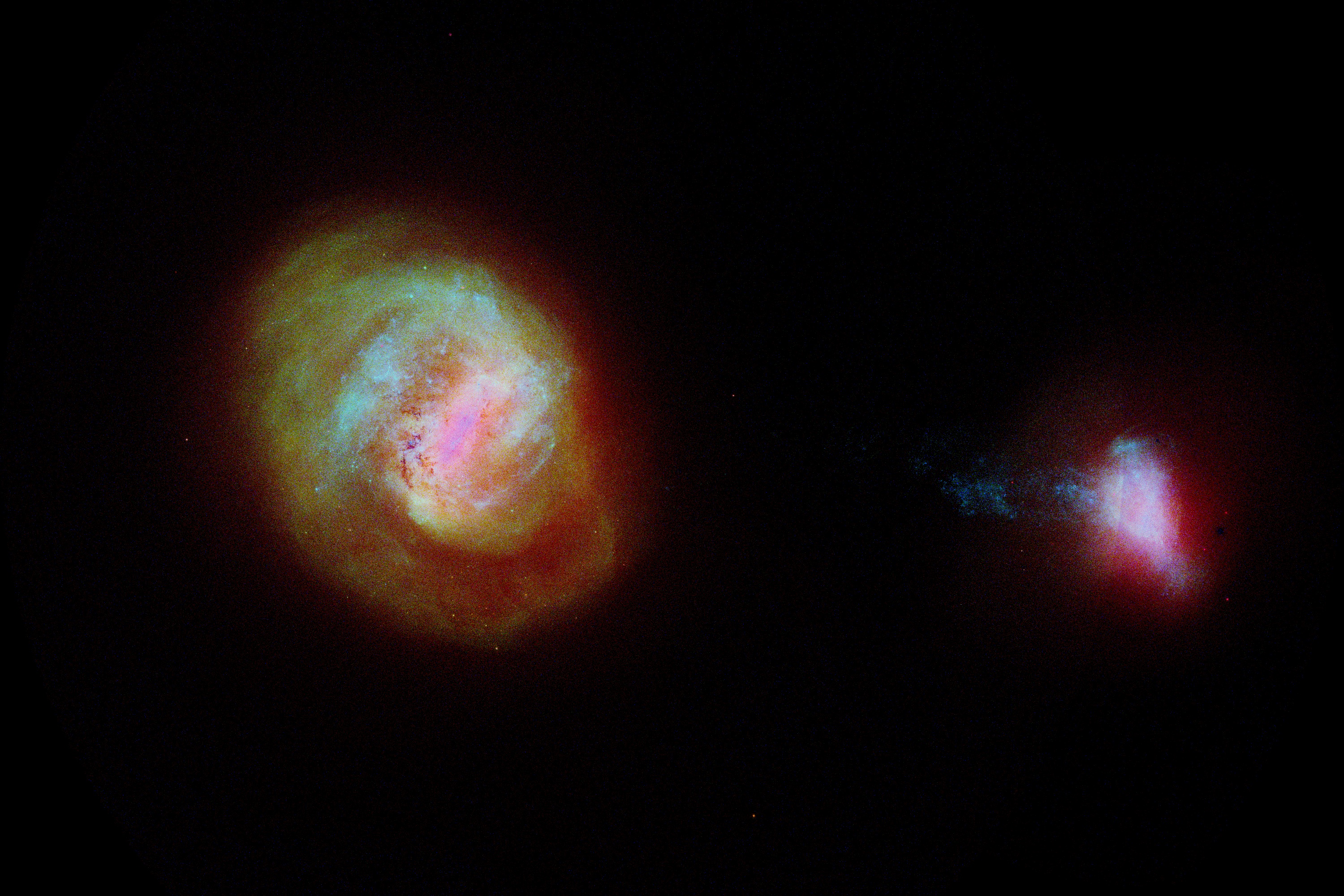The Milky Way and beyond: Scientists publish new data on nearly 2 billion stars
Stars, stars and more stars.
As of today (Dec. 3), scientists have 1.8 billion local stars at their fingertips.
That bounty is thanks to the European Space Agency's Gaia mission, which has spent 6.5 years tracking stars in our Milky Way galaxy and beyond. Using the spacecraft's observations, scientists can create a precise 3D map of stars and find patterns playing out across the galaxy.
"Essentially all of astronomy benefits from this one way or another because it's very fundamental data," Anthony Brown, an astronomer at the University of Leiden in the Netherlands and chair of the Gaia Data Processing and Analysis Consortium Executive team, told Space.com. "It's a very, very broad survey mission."
Related: This 3D color map of 1.7 billion stars in the Milky Way is the best ever made

Studying 1.8 billion stars is impressive, of course, but the heart of the mission's science is the statistical analysis that such large amounts of data facilitate. "I think the precise number doesn't matter so much," Brown said. "We're still only observing probably about 1% of all the stars in the Milky Way, even with this enormous number."
Although today is scientists' first chance to access the data publicly, Gaia team members have already dug through it to conduct some initial analyses. One result of that work is that scientists have measured how the solar system is accelerating in its orbit of the Milky Way, a tiny phenomenon.
To do so, Gaia studied more than a million quasars — bright objects at the hearts of galaxies — located so far away that they shouldn't appear to move. But they do, and in a pattern that points to the center of the center of the Milky Way and reflects all the different tiny tugs that the solar system experiences from neighboring objects.
Get the Space.com Newsletter
Breaking space news, the latest updates on rocket launches, skywatching events and more!
The result is a value that's a fraction of a fraction of a meter, measured with a precision still smaller, an eye-wateringly tiny number that couldn't be calculated meaningfully until the new data release.
"It's amazing that one can do this," Brown said of the measurement.
And that's just the beginning. Today's data is the Gaia spacecraft's third trove and includes nearly three years' worth of observations, less than half of what has been gathered so far. (The disconnect stems from the sheer bulk of data Gaia collects and the processing work that 400 team members spread across Europe must do to turn it into the public results.) And at least two more data releases are planned, potentially more if Gaia's mission is extended to last a full decade.
Among plenty of other research, the previous data release allowed scientists to track the formation history of the Milky Way, Brown said. Those measurements identified the Milky Way's most recent significant merger, some 10 billion years ago. More recently, as the Milky Way has slowly torn apart a nearby dwarf galaxy, the interactions seem to coincide with bursts of star formation in the Milky Way, a different kind of galactic shaping.
Brown highlighted a different finding from the previous data to show the sort of science Gaia can facilitate, based on observations of white dwarfs, the superdense cores of stars like our sun that have lost their outer layers and run out of fuel.

In Gaia's measurements of these stars' luminosity and temperature, scientists could identify brightness levels at which the generally dimming stars seem to hover for a bit before continuing to fade. And that, Brown said, is evidence that deep inside those stars, carbon and oxygen are crystallizing, which scientists have long expected but couldn't observe.
"I like this result a lot because we start out by saying, 'OK, let's see out how far away these things are,' and you end up looking in the interior and proving that they crystallize," Brown said. "This was predicted 50 years ago, but this is the first time we can prove it with observations that it's happening."
And today, scientists have even more powerful data to play with.
The new data is available through the European Space Agency.
Email Meghan Bartels at mbartels@space.com or follow her on Twitter @meghanbartels. Follow us on Twitter @Spacedotcom and on Facebook.
Join our Space Forums to keep talking space on the latest missions, night sky and more! And if you have a news tip, correction or comment, let us know at: community@space.com.

Meghan is a senior writer at Space.com and has more than five years' experience as a science journalist based in New York City. She joined Space.com in July 2018, with previous writing published in outlets including Newsweek and Audubon. Meghan earned an MA in science journalism from New York University and a BA in classics from Georgetown University, and in her free time she enjoys reading and visiting museums. Follow her on Twitter at @meghanbartels.









